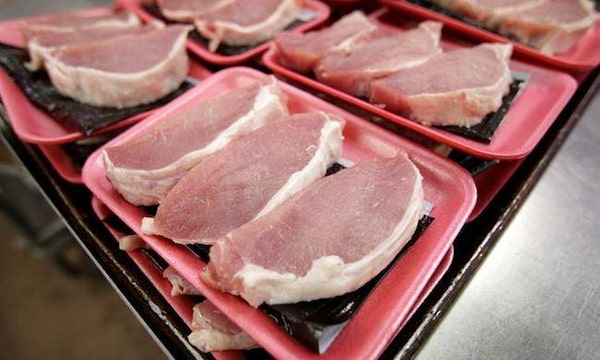Sylvain Charlebois is professor in food distribution and policy, Faculties of Management and Agriculture, Dalhousie University

Manufacturers and retailers, afraid of losing customers if they raise prices, are increasingly keeping the price steady but reducing the size of the food in their packages.The Associated Press
Most consumers are habitually concerned about the cost of food. We constantly look for bargains – and the food industry knows it. According to a recent survey by Dalhousie University, almost 60 per cent of Canadian consumers consider price as one of the top three decision-making criteria when shopping for groceries. Price is key, no matter what. Grocers play around with prices to keep all of us on our toes.
Pricing in the food processing sector is intricate. Ingredients, energy costs, wages and so forth can burden food manufacturers as they try to cultivate relationships with grocers and retain market shares. For decades the shrinking-package strategy has been part of the food industry. This can be seen in items such as chips, ice cream, cookies, pasta and chocolate bars. But packages are now shrinking even faster than ever before. The tactic is so widespread that some are calling it shrinkflation.
This is happening all over the world: A recent British study suggests that there almost 3,000 food products that can be found in a typical grocery store that have shrunk in package size since 2012. This came at a point in time when annual food inflation hit 6 per cent, and the food industry was blamed for gouging consumers. Similar numbers are coming out of the U.S. market, with many manufacturers admitting to shrinking packages to maintain prices at a competitive level. Many of these products enter the Canadian market. Rough estimates, based on what’s happening in the U.S. and European markets, suggest that anywhere between 15 per cent and 20 per cent of all packaged food products have shrunk in the past five years. Food companies have found a way to defend margins without upsetting most shoppers.
Shrinkflation, or downsizing, is almost the norm these days, which causes some consumers to find the practice irritating. Yet food companies are not really misleading the public. Weight and volume information can easily be found on any labelled package. Habits make us believe we are purchasing the same thing as we zoom in on the one constant that motivates our behaviour when shopping: price.
When costs rise in food manufacturing a company has three options: raise the price; make smaller packages; or change the ingredients. Given our competitive food industry, raising prices can be challenging. Since early 2018, prices in food stores have dropped because of higher competition. Yet changing ingredients can be hazardous to producers. For 30 years – before the 2008 bump in commodity prices when food was considered as an afterthought compared to today – companies were egregiously reformulating food products. This was at a time when taste and the quality of ingredients were not on the radar. Some food manufacturers paid the ultimate price for changing the taste of certain products, just to save a few pennies. Today, with social media, companies are one poor decision away from seeing an entire product line vanish.
The only viable option is to downsize. With the arrival of investment conglomerates that see food much the same way as they value bolts, tires, or buildings, recalibrating ingredients and changing a package is almost second nature. 3G Capital, the Brazilian giant which gobbled Heinz-Kraft, Burger King and Tim Hortons in recent years, is one good example. Most of these new players in the food space are not astute to the nuances of food products. They just look at the numbers knowing consumers are out there looking for the best price.
Whether we want to admit it or not, as food consumers we value quantities for the lowest price. It is challenging to change this way of thinking. There could be an opportunity for manufacturers looking at increased costs. Instead of downsizing products and hoping no one would notice, it could become a selling point. Studies show that consumers who remember how good a product tastes are willing to pay more for less if given no other choice: selling flavour over quantity, so to speak. Showing a more transparent approach to packaging supported by a less food waste agenda, could let consumers appreciate that things do get complicated out there and some adjustments are required. But it’s hard to see this becoming an industry trend.
What is unclear is how shrinkflation is captured by the Statscan consumer price index. Protocols show certain quantities being mentioned, but it does not explain how data collection is adjusted as quantities change. This contributes to food inflation in a subtle way. Statscan could assist Canadians in monitoring shrinkflation to help consumers be more vigilant and assess how it affects our food budget. Right now, however, most of us would not know. In some cases, quantities have been reduced by 15 per cent in three years. By compounding real inflation, food prices may have gone up by more than 6 per cent in many cases, when the reported food inflation rate was anywhere between 1.5 per cent and 2 per cent.
In the end, consumers can be outraged and condemn the practice of shrinking food products. But when you really think about it, food companies are really delivering what consumers are asking for.